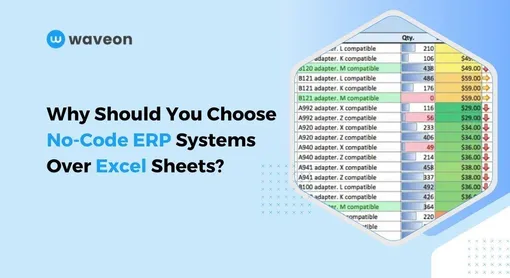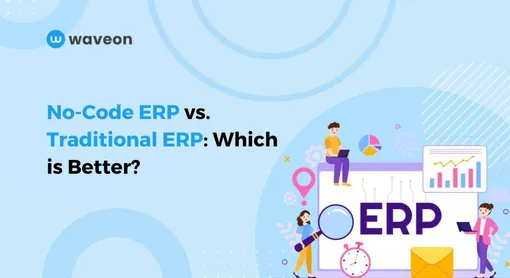Insight
7 Best Ways to Create A successful Customer Driven Marketing Strategy
Waveon Team
6/21/2023
0 min read
TABLE OF CONTENTS
In today's fast-paced business landscape, where customers reign supreme, adopting a customer-driven marketing strategy is no longer a choice but a necessity. The era of businesses dictating their offerings to a passive audience is a thing of the past. Now, the spotlight is on engaging customers in a captivating dance of mutual admiration and unwavering loyalty.
Imagine a group of savvy marketers in sleek, stylish suits, armed not just with their sharp intellect but also a profound understanding of their customers' innermost desires. They fearlessly plunge into the depths of consumer preferences and resurface with brilliant ideas that even the most skeptical customers can't help but exclaim, "I never knew I needed this, but now I can't imagine life without it!"
Customer-driven marketing revolves around forging a symbiotic relationship between businesses and their customers. It's akin to a romantic comedy, except instead of wooing their beloved beneath the moonlight, marketers serenade their customers with meticulously tailored solutions and irresistible offers.
In a fiercely competitive marketplace, the driver of decision-making has shifted to customer experience (CX). CX now rivals, if not surpasses, product and price in influencing consumer purchasing choices.
Statistically, businesses that are customer-driven enjoy a remarkable 60% higher profitability compared to those that aren't.
Attempting to promote a product aggressively without a clear value proposition is unlikely to yield substantial results or long-term success. This is where customer-driven marketing strategies thrive.
Embracing a customer-driven approach entails a comprehensive reshaping of your sales, marketing, and support strategies to cater to individual needs. This transformation occurs when companies transition from focusing solely on products to fulfilling customer needs, thereby fostering trust and inspiring loyalty.
What is a customer-driven marketing strategy?
A customer-driven marketing strategy involves tailoring approaches to meet individual customer needs, thereby enhancing a company's marketing return on investment (ROI). By discerning and focusing on customers with greater lifetime value, enterprises can foster stronger relationships through the creation of solutions that precisely align with customer requirements.
A robust customer-driven marketing strategy empowers businesses to harness the advantages of customer targeting and segmentation. It yields invaluable data, providing a comprehensive 360-degree perspective of customers.
How to make a successful consumer-driven marketing strategy
Comprehending your customers is pivotal for a successful consumer-centric strategy. Adopting a customer-driven approach transcends the domain of the marketing team alone. Sales and support teams must also be adept at delivering exceptional customer service and memorable experiences.
To truly excel in the realm of customer-driven marketing, businesses must almost become adept at reading minds—not in an eerie, supernatural manner, but by comprehending the nuances of their customers' needs, aspirations, and idiosyncrasies. Think of it as unraveling a intricate puzzle, where each piece symbolizes a customer preference, and the final completed image unveils the path to achieving commercial success.
Mastering the art of a customer-centric marketing strategy entails mastering the following key characteristics:
1. Identify your target audience
Building a customer-centric marketing strategy focuses on identifying your market audience and anticipating their needs. Helps you create buyer personas to personalize your marketing efforts. 47% of companies that exceed their sales and revenue goals consistently maintain personas.
Customer personas add value to your company by representing different segments. Using data-backed research is key to understanding who your target users are and what motivates them to purchase your product or service. Data collected from various channels and sources gives you a clear picture of who your target audience is.
A key component of influencing a buyer persona is improving the customer experience. Well-constructed personas also lead to value-based marketing and selling.
Here are the key ways buyer personas can help you with your customer-centric marketing strategy.
Enhance your value proposition to meet your customers' desired needs.
Accelerate profits by giving customers what they want.
Gain a deeper understanding of your buyers, their needs, and how to solve them.
Increase lead conversions by aligning your team with a customer-centric culture.
2. Segment your audience
Segmentation provides a comprehensive perspective of your target audience. Audience segmentation holds immense significance in the digital landscape due to the heightened empowerment of consumers. The ability to make purchasing decisions swiftly has been accelerated in the digital era.
Consequently, the hurdle for digital marketers lies in orchestrating strategies that effectively engage consumers in the decision-making process. To achieve this, a dedicated effort is required to comprehend the thought processes and behaviors of your audience.
Targeting the right market with the right personalized message is an important part of any customer-driven marketing strategy. It also helps companies to clearly distinguish between product and customer-driven approaches. The key benefits of segmentation for improving customer experience (CX) are:
Create customised marketing strategies to align product and service offerings with the needs of customer segments.
Improve the products or services offered; Companies can use market segmentation to identify what works and, more importantly, what doesn't, and make changes accordingly.
Help businesses retain more customers by offering products that engage customers throughout their lifecycle.
3. Align product strategy with product market feasibility
If you could choose between two scenarios, which would you choose?
Create a product and find the perfect audience for it.
Find customers and design products based on the market information you collect.
The former is a time consuming and risky process, so we recommend choosing the second option. Businesses should tailor their products and services to their customers' needs instead of marketing products that are irrelevant to them.
From product development to marketing strategy, focus on customer needs and you will succeed.
Key tips for a successful customer-driven marketing strategy.
Create a Positioning Map – Based on your customers' perceptions of your brand and your competitors' brands, you should start creating a positioning map.
Emphasise your value proposition – Define the customer need that your product or service can best address. Focus on your product roadmap and the challenges you can overcome.
Choose Your Competitive Advantage – Design your products and services to differentiate your business.
4. Create an omnichannel customer retention plan
In the contemporary landscape, customers demand more than experiences limited to physical stores or digital devices such as smartphones, tablets, and laptops. The foundation of a triumphant customer-driven marketing strategy hinges on devising a comprehensive omnichannel customer retention plan.
An omnichannel approach possesses the potential to provide profound insights into customer interactions and behaviors across their entire lifecycle. Notably, enterprises boasting robust omnichannel customer strategies succeed in retaining a remarkable 89% of their customer base.
Omnichannel engagement facilitates customers in connecting with your brand via their preferred channels, ensuring a seamless transition within a single interaction. This capability elevates satisfaction levels and markedly enhances the customer lifetime value (LTV).
Therefore, planning a strategy for delivering a great omnichannel customer experience (CX) is critical. The key elements of an omnichannel customer retention plan are:
Connect with your customers through their preferred channels – Gain a deeper understanding of your customers' preferred touchpoints and proactively engage in real-time interactions on those channels.
Engage with your customers using the right tools - Offer real-time support with live chat or use visual tools like co-browsing and video chat for faster resolution. Chatbots can also be used to provide 24/7 support for frequently asked questions.
Personalize Interactions – Personalize customer interactions at identified touchpoints to deliver a superior customer service experience.
5. Invest in customer service
Customer service is an integral part of any consumer-driven marketing strategy. Customers always remember the quality of service your brand provides. No matter how good your product is, you will lose business if your customer experience strategy is not built properly on customer service. “U.S. businesses lose $1.6 trillion when customers churn because of poor customer service.” When businesses invest in a “customer service-driven culture,” they strengthen customer loyalty and You can increase your lifetime value (CLTV).
Here are some customer service tips to enhance your customer-driven marketing strategy.
Provide real-time support using live chat software and visual interaction tools such as co-browsing and video chat.
You can use chatbots to automate customer support tasks and provide his 24/7 support for common customer questions. Provide consistent support across all channels by being proactive where your customers are.
Educate your support team on the right customer service communication strategies to deliver a great service experience.
In this customer-driven utopia, businesses aren't just sellers; they're companions on a thrilling adventure. They listen intently to their customers, adapting their strategies to match their ever-evolving tastes. It's like a perpetual dance, with businesses leading the way while customers twirl and whirl with excitement.
6. Leverage customer feedback to improve your marketing strategy
One of the key aspects of a consumer-driven marketing approach is customer communication. Your support team plays a vital role in your overall marketing plan. Customers who interact with your business must have a great, mutually beneficial experience.
A positive customer experience leads to better brand reputation, and a negative customer experience leads to feedback.
Leveraging customer feedback doesn't just help you develop better products and services. It also makes your customers feel that you value them and that you are heard, which is important in building trust and loyalty.
How does implementing customer feedback improve your consumer-driven marketing strategy?
You can monitor customer satisfaction by tracking your Net Promoter Score (NPS). This will give you a complete understanding of how they perceive your brand.
Feedback provides insight into what works well in the product and what to do to improve your experience.
Voice of the Customer helps you fine-tune your marketing goals to meet your customers' needs.
They can identify gaps in the value proposition and ensure the end product actually meets expectations, solves problems and meets needs.
7. Get more customers with word of mouth
Growing your customer base through referrals and word of mouth can be part of your customer-driven marketing strategy. To attract new customers, you can encourage your loyal customers to share their positive experiences and success stories with their friends and social platforms.
Customer-driven companies have a positive impact on their customers. Show your willingness to do the following.
Word-of-mouth marketing impressions drive five times more sales than paid media impressions, and people are 90% more likely to trust and purchase a brand recommended by a friend.
Learn how to use Brand Advocate to build word of mouth, community and build your brand.
You can implement a referral program that rewards customers for referring new business by offering additional discounts, cash rewards, or free subscriptions.
Encourage customers to leave positive reviews and star ratings on specific her websites.
Create an affiliate program. Your affiliate receives a percentage of all transactions with users who follow links on your website.
Customer-focused companies may also hold contests for their customers and send recommendations within a specified period of time.
Final thoughts
Customer-focused marketing is the foundation for building long-lasting and successful customer relationships. A consumer-driven strategy not only helps build a strong brand and acquire customers, but it also helps close feedback loops that help recognize changing customer needs.
However, to properly plan and create a customer-driven marketing strategy, you need the right tools. You can sign up for the best tools to get top-notch customer service tools and boost your marketing efforts.
But here's the secret ingredient: authenticity. Customers today have an uncanny ability to sniff out insincerity from a mile away. So, businesses must be genuine, honest, and transparent. Think of it as a courtship ritual, where businesses woo their customers with sincerity and integrity, leaving no room for doubt or disappointment.
After all, every company wants to provide a pleasant experience with their products and services. Therefore, a focus on experience is essential in any value-based marketing strategy.



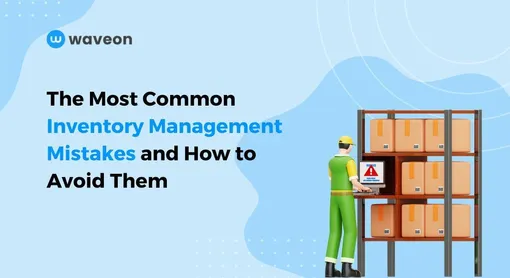

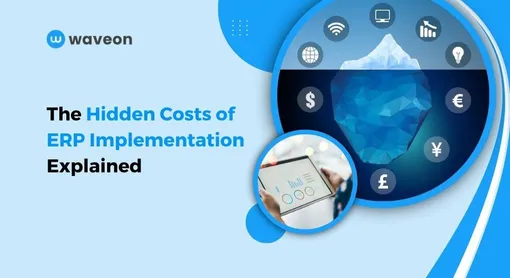
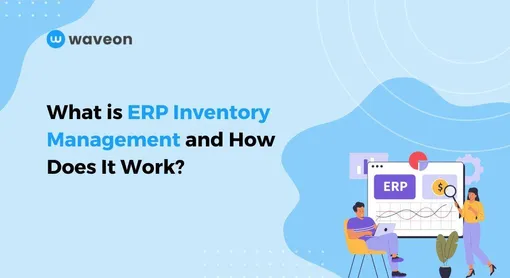

![Choosing the Right Bill of Materials (BOM) Management Software [5 Tools]](/_ipx/w_510,f_webp/static/img/blog/_posting/1741829511049.jpeg)
